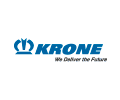UK drivers, fleet managers, and retailers will struggle to forget the fuel crisis of 2021, when the triple threat of Brexit, COVID-19 and the ensuing HGV driver shortage led the British public to panic buy until the pumps ran dry, writes Descartes’ Head of Marketing, Andrew Tavener.
 By September 2021, 90% of forecourts were out of fuel (Reuters). This brought chaos to every single industry reliant on logistics – retail included, with last mile delivery companies struggling to fuel their fleets.
By September 2021, 90% of forecourts were out of fuel (Reuters). This brought chaos to every single industry reliant on logistics – retail included, with last mile delivery companies struggling to fuel their fleets.
The irony is, there was no shortage of fuel, until drivers realised their own worst nightmares by panic buying. But now the fears are founded and for every fuel dependant operator in the UK, things are about to get much, much worse.
The Russian invasion of Ukraine has led Western countries to announce bans on Russian energy exports, putting wholesale prices for oil close to an all time high. Also, energy prices are going up generally in the UK as the costs of living rise.
Fuel prices started rising in February 2022. Now, in April 2022, the UK forecourt cost of petrol is topping £1.60 a litre and diesel over £1.70 a litre.
As the prices continue to rise, panic buying has already begun, and so too have the consequences. Queues at forecourts and empty pumps mean delays for delivery drivers that are all too familiar.
Understandably, concerns are growing over another fuel shortage, once again driven by panic and now heightened by recent memory. But arguably the biggest danger for delivery companies and retailers is not a scarcity of fuel; it’s the threat to profitability.
Inflation on the forecourts is forecast to continue, with energy experts warning MPs that – worst case scenario – fuel costs will reach £3 a litre for diesel and £2.40 a litre for petrol without quick and decisive action. Meanwhile, UK delivery companies in particular will continue to struggle as fuel costs soar.
As with all transport operations, fuel is one of their biggest expenses. The oil price surge will either be a huge hit to their bottom line or will need to be passed on the customers. Either option will be damaging to the business, in an environment where margins are already scarce. And if they then struggle to pay their drivers market rates, their drivers won’t stay on.
The knock-on effect for retailers is similarly grim. With delivery a major part of the overall customer experience, retailers cannot afford to disappoint customers’ delivery expectations – lest they face a decline in brand reputation, at best and lost sales, at worst.
While transport firms are urging the Government to take quick and decisive action, such as cutting VAT and fuel duty further, one of the most glaringly obvious solutions for businesses is to use electric vehicles (EVs). But as anyone in the industry will know, the transition to EVs isn’t a quick or low cost fix.
So when facing disruption on an unprecedented scale, just what can retailers and fleet operators do – and fast – to protect their profits? The answer is, use data to your advantage.
Now more than ever before, drivers will need to get the most out of every mile, keep the cost of every delivery down, and save on every last drop of fuel. To do this, you need to use data to optimise every aspect of the last mile of delivery. This includes incentivising your customers to book delivery slots that are as fuel-friendly as possible; choosing the right size vehicle for every journey; taking the most efficient route (in real-time); and being as fuel efficient as possible with your drivers.
Descartes can help you optimise your fleet operations helping you to deliver more and reduce fuel costs. See what you could save with Descartes’ Fuel Savings & Carbon Emissions Calculator


.gif?rand=3502)











